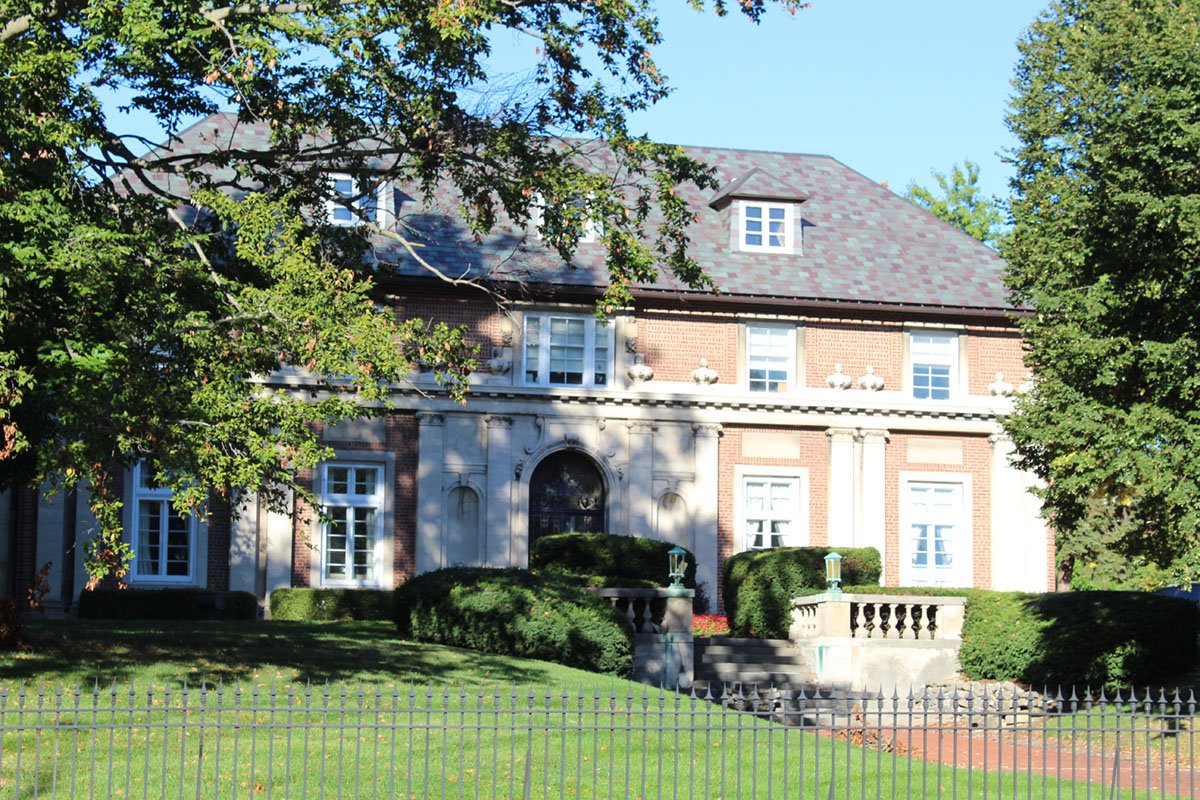16. Historic Square: Historic Homes Meet the Needs of Business
James Glass
Column that appeared in the Indianapolis Star onYou probably have seen them many times on Meridian Street as you’ve traveled north and south. The Fairbanks home at 30th and Meridian and the Levey Mansion at 29th Street both catch the eye with their grandly scaled, elegantly detailed designs. And both were saved by a life insurance company with unusual vision.
At 2960 North Meridian Street stands the home of Charles Warren Fairbanks, Vice President of the United States under Theodore Roosevelt, close friend and backer of President William McKinley, owner of the Indianapolis News, and the Republican nominee for Vice President in 1916. After returning from a world tour in 1910, Fairbanks and his wife, Cornelia Cole Fairbanks, decided to build a $100,000 home at 30th and Meridian Street. The couple chose a noted Chicago architect, Howard Van Doren Shaw, to design the house and the famed Prairie landscape architect, Jens Jensen, to lay out a formal garden. Charles Fairbanks described the red brick exterior with limestone Ionic pilasters and urns as Colonial, but it is also a mixture of English Baroque and Italian Renaissance. Here Fairbanks received a delegation from the Republican Party in 1916, notifying him that he had been nominated again as Vice President, and here he addressed a crowd of 3500 on the lawn of his home, accepting the nomination. Here also the former vice president and statesman received notables from politics and literature and persuaded many to plant trees around his home. As a leader in a movement to restore Indiana forests, Fairbanks persuaded former President William Howard Taft, 1916 presidential nominee Charles Evans Hughes, and Hoosier Poet James Whitcomb Riley all to make plantings.
After Fairbanks’s death in 1918, the home was sold by his family to Indianapolis Life Insurance Company, which moved into the spacious house in 1923. The new owners took special care of the distinguished residence and when they required more space in 1950, they had the exterior of the substantial addition designed with brick and limestone details matching the original. When Eugene M. Busche became president of Indianapolis Life in 1972, he encouraged the firm to restore the house and interpret its history to visitors. He removed partitions from the former Chinese Sun Room and made it into a board room. He then restored the plaster ceiling in the former drawing room, making it the president’s office. The library, with its oak paneling and concealed walk-in safe, became again a repository for books and conferences. In every room, a historical photo showing the space as it was in Fairbanks’s time gave workers and visitors a sense of the rich history of the house.
Busche also took an interest in the former home of Louis H. Levey at the south end of the same block. Levey, a wealthy printer, had constructed an imposing limestone mansion at 2902 North Meridian about 1904, in the French Beaux Arts style. When Busche heard that it was for sale in 1978, he approached his board and told them that he thought Indianapolis Life ought to purchase the house for additional offices. And if the company wouldn’t, he would personally acquire and preserve the beautiful house! The board not only purchased the Levey Mansion, they later approved acquisition of the former Clemens Vonnegut, Jr. House to the south, a Georgian style home, and restored it.
Today, Busche says that such historic houses, although not conducive to corporate operations that require a lot of intercommunication between departments, lend themselves very well to executive offices and special project staffs. Elizabeth Coit, executive director of Networks Financial Institute, which leases the Levey Mansion, adds that Networks’ home, with its spacious, inter-connected rooms, fosters collaboration and informal meetings, critical in a start-up operation. The Networks Institute is an initiative of Indiana State University that through a Lilly Endowment grant works to facilitate education, outreach, and research in the financial services industry.
The whole block, which Indianapolis Life named Historic Square, was purchased in 2004 by International Medical Group (IMG), which provides medical insurance to people living or traveling abroad. According to Thomas W. Moses, Vice President for Real Estate Development, IMG is planning to continue the stewardship of Indianapolis Life for the two mansions. The Brougher family, which owns IMG, previously adapted Wood High School and the former School 9 for business offices and has a special interest in using historic buildings for their company operations. Moses says that the historic houses will continue to be occupied by tenants such as Networks Financial Institute and the 500 Festival, which leases the Fairbanks Home.

Fairbanks House in 2019. James Glass
